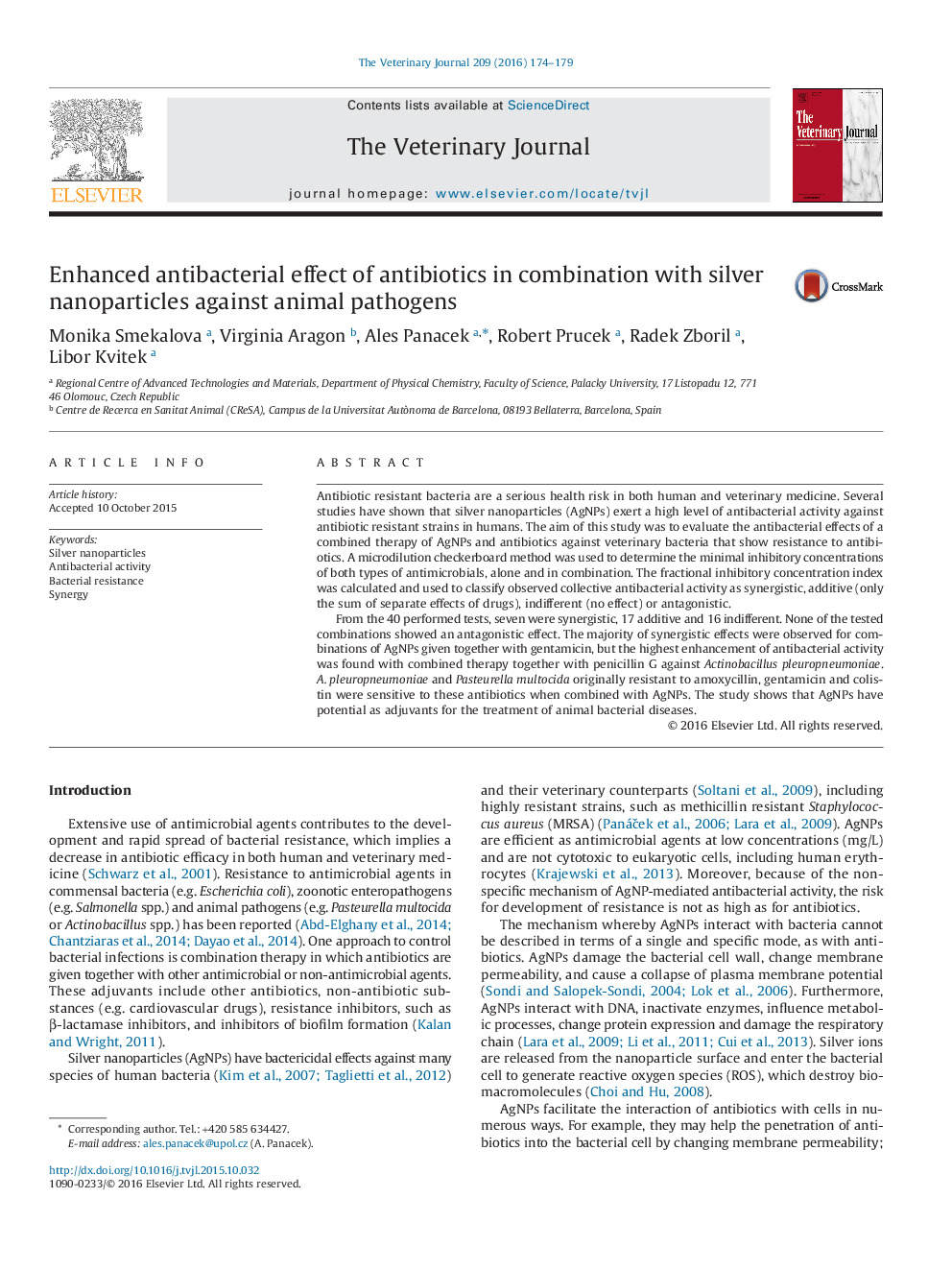| Article ID | Journal | Published Year | Pages | File Type |
|---|---|---|---|---|
| 5797354 | The Veterinary Journal | 2016 | 6 Pages |
â¢Nanosilver was tested as potential adjuvant in veterinary therapy.â¢Nanosilver showed antibacterial activity against Gram-negative animal bacteria.â¢Nanosilver enhances the antibacterial activity of antibiotics.â¢Combination of nanosilver with antibiotic rendered bacteria sensitive.
Antibiotic resistant bacteria are a serious health risk in both human and veterinary medicine. Several studies have shown that silver nanoparticles (AgNPs) exert a high level of antibacterial activity against antibiotic resistant strains in humans. The aim of this study was to evaluate the antibacterial effects of a combined therapy of AgNPs and antibiotics against veterinary bacteria that show resistance to antibiotics. A microdilution checkerboard method was used to determine the minimal inhibitory concentrations of both types of antimicrobials, alone and in combination. The fractional inhibitory concentration index was calculated and used to classify observed collective antibacterial activity as synergistic, additive (only the sum of separate effects of drugs), indifferent (no effect) or antagonistic.From the 40 performed tests, seven were synergistic, 17 additive and 16 indifferent. None of the tested combinations showed an antagonistic effect. The majority of synergistic effects were observed for combinations of AgNPs given together with gentamicin, but the highest enhancement of antibacterial activity was found with combined therapy together with penicillin G against Actinobacillus pleuropneumoniae. A.âpleuropneumoniae and Pasteurella multocida originally resistant to amoxycillin, gentamicin and colistin were sensitive to these antibiotics when combined with AgNPs. The study shows that AgNPs have potential as adjuvants for the treatment of animal bacterial diseases.
